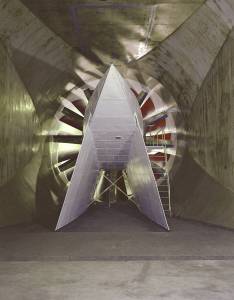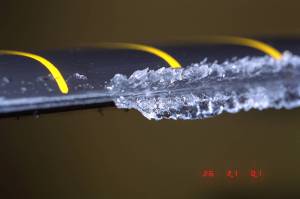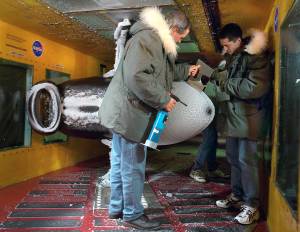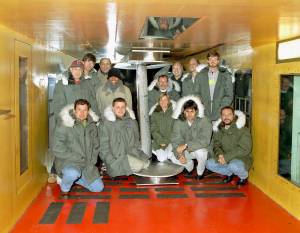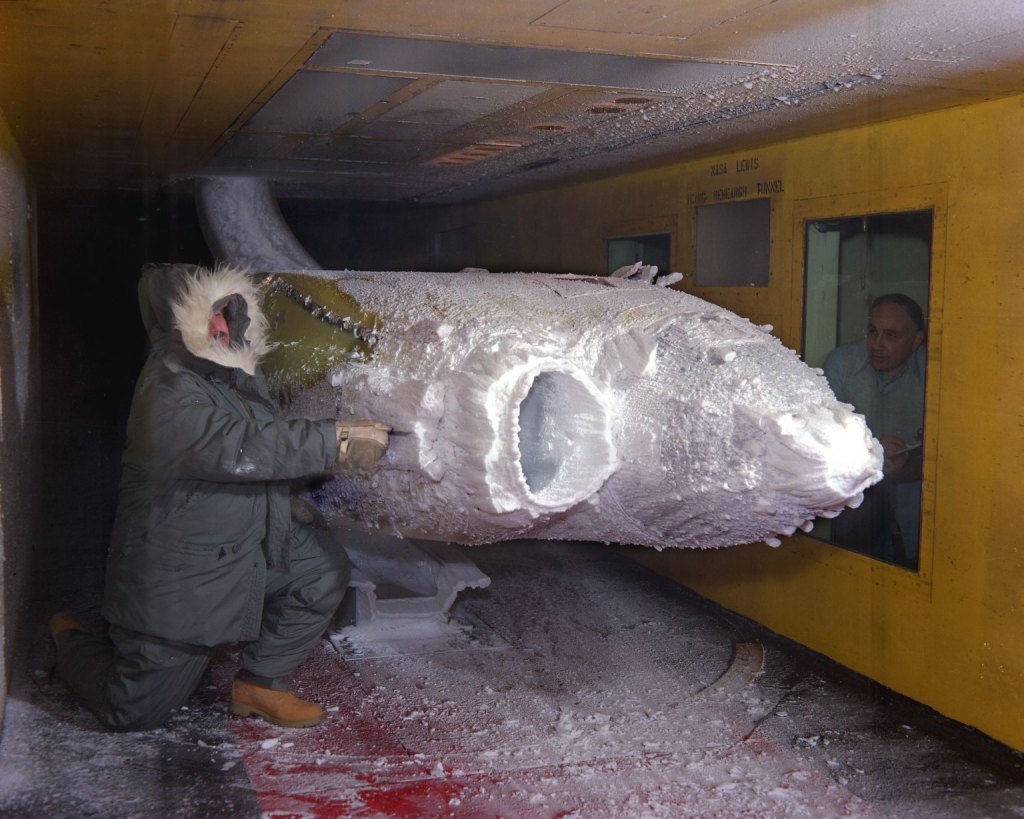
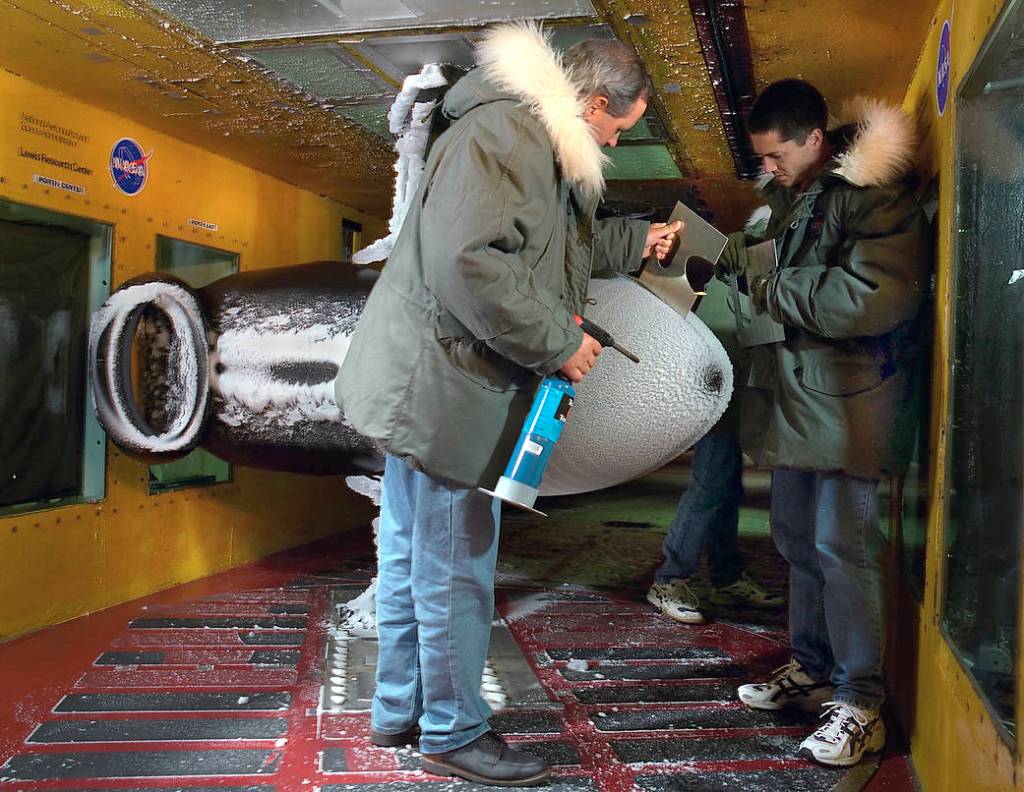

Icing Research Tunnel (IRT)
Work continues today in the investigation of deicing and anti-icing fluids for use on the ground, deicing and anti-icing research on aircraft including rotor systems and certification of ice protection systems for military and commercial aircraft.
Focus Areas and Capabilities
Learn more about the specifications and capabilities of this wind tunnel.
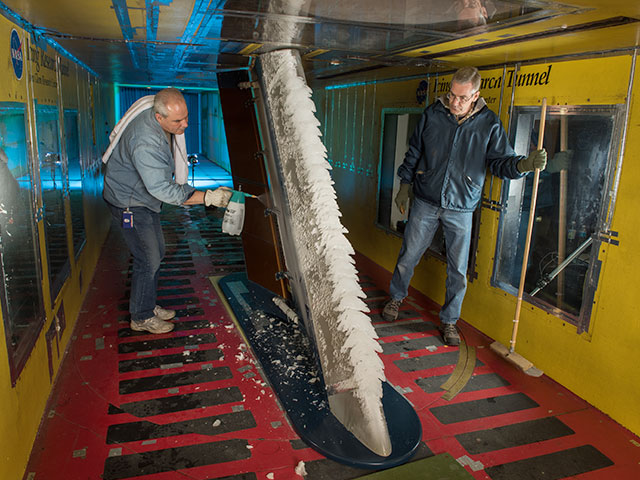
Characteristics
The IRT is a closed-return, atmospheric-type wind tunnel that is refrigerated for all-year operation. It is 6 ft. x 9 ft. x 20 ft.
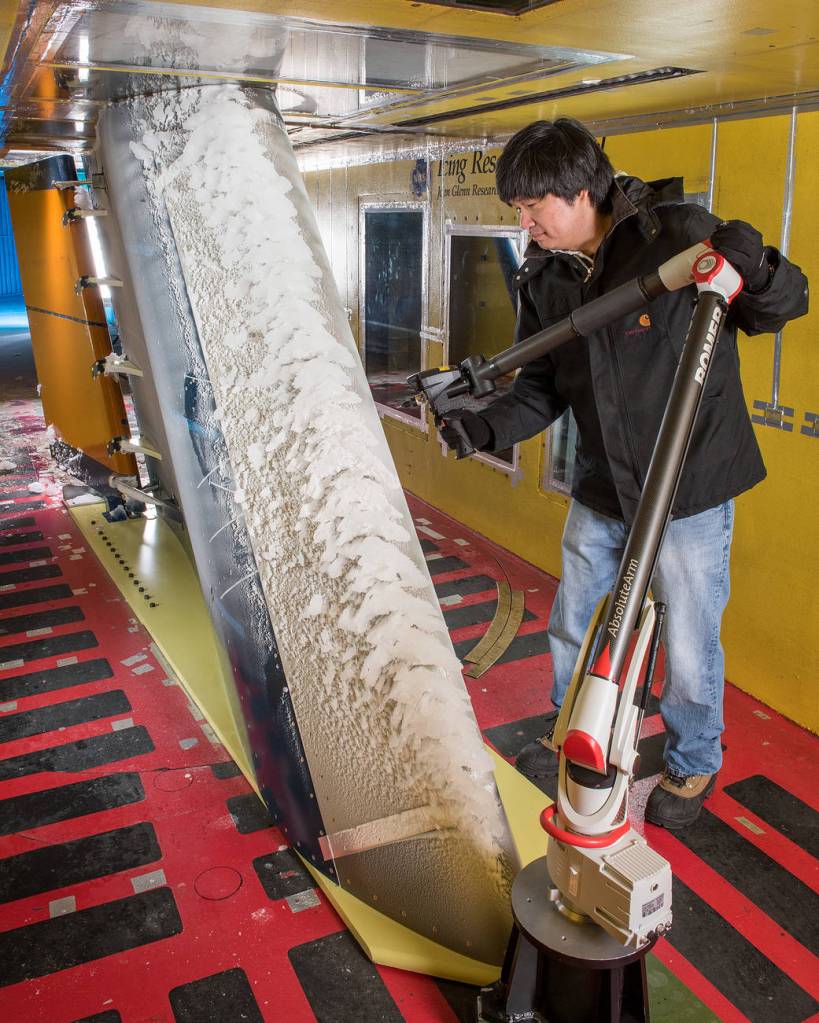
Quick Facts
The IRT has played a substantial role in developing, testing, and certifying methods to prevent ice buildup on aircraft.
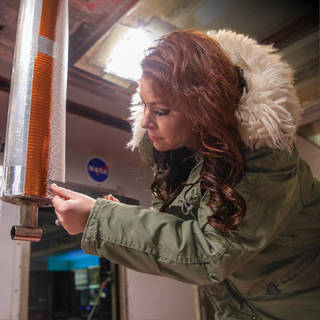
Data Acquisition
Imaging technology, data processing and instrumentation are available.
Icing Research Tunnel (IRT) Gallery
Contact Information
Icing Research Tunnel
Facility Manager: Dennis Eck
(216) 433-3071
NASA Glenn Research Center
21000 Brookpark Rd.
Cleveland, Ohio 44135
(216) 433-4000
Fact Sheet
Icing Research Tunnel
The Icing Research Tunnel (IRT) is one of the world’s largest refrigerated wind tunnels dedicated to study aircraft icing.
Read the Icing Research Tunnel Fact Sheet
AETC Subsonic Facilities
NASA operates four Subsonic Facilities.
The 9-by 15-Foot Low-Speed Wind Tunnel, the 14- by 22-Foot Subsonic Tunnel, the Icing Research Tunnel and the 20-Foot Vertical Spin Tunnel.
Learn More About AETC Subsonic Facilities
AETC Ground Facilities
AETC sets the strategic direction for NASA’s versatile and comprehensive portfolio of ground test aeronautics research capabilities.
Among these assets are subsonic, transonic, supersonic, and hypersonic wind tunnels and propulsion test facilities at Ames Research Center, Glenn Research Center, and Langley Research Center.
Learn More About Ground Facilities




























